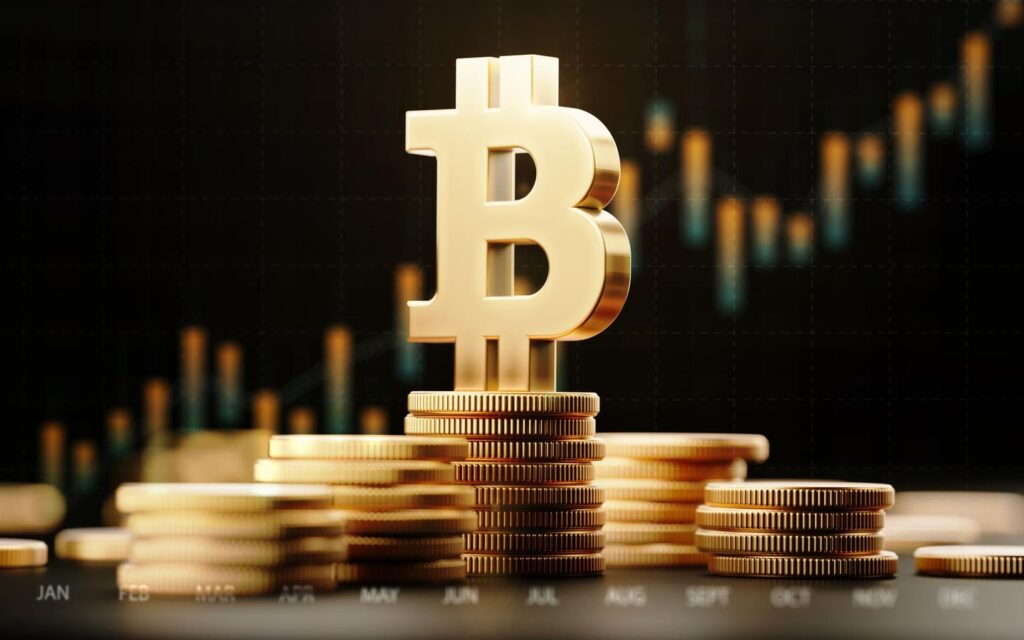If you happen to be a Bitcoin skeptic, you’re not alone. A recent Pew Research survey found that 63% of Americans are not confident in the reliability or safety of cryptocurrencies in general.
But when BlackRock speaks, it often pays to listen.
In its just-released 2025 Global Outlook report, the world’s largest asset management firm lays out a case for Bitcoin not only as a diversifier alongside gold but also a strategic hedge against an environment where the historical stock-bond correlation is breaking down.
For decades, the classic 60/40 portfolio—60% stocks, 40% bonds—was the gold standard of diversification. When stocks crashed, as they did during the dotcom bubble and global financial crisis, bonds usually rose in value, providing a cushion against market volatility.
But we’re in a new regime now where this correlation has become increasingly unreliable. If you recall, 2022 was the worst year on record for U.S. stocks and bonds.
BlackRock identifies this trend and suggests that investors need to look beyond government bonds for diversification. This is where gold and Bitcoin come into play. Both assets offer unique advantages as hedges and diversifiers, but they do so in different ways.
BlackRock’s Case for a 2% Bitcoin Allocation
Bitcoin’s potential as a portfolio diversifier stems from its unique value proposition. It has a fixed supply of 21 million coins, and its demand is influenced by adoption trends, investor sentiment and macroeconomic factors. In the days following the November election, Bitcoin surged above $100,000, with its market cap topping $2 trillion—just under 2% of the total value of global equities.
Last Thursday, Bitcoin tumbled 3.6%, falling back below $100,000, on the news that the Federal Reserve will approve fewer interest rate cuts than the market expected next year.
BlackRock isn’t suggesting that Bitcoin should replace bonds in your portfolio. Instead, they’re recommending a modest allocation—1% to 2%—to capture its diversification benefits without significantly increasing risk. In fact, a 2% Bitcoin allocation provides a similar risk profile to holding the “Magnificent Seven” tech stocks (Apple, Microsoft, Nvidia, Amazon, Alphabet, Meta and Tesla) in a balanced portfolio.
A Market Cap That Can’t Be Ignored
Even though Bitcoin’s market cap has fallen below $2 trillion, it remains the seventh-largest asset in the world, ahead of Saudi Aramco and even silver. The global gold market, by comparison, is valued at $17.8 trillion—nine times larger than Bitcoin.
But Bitcoin’s growth trajectory is undeniable. Before its price declined, it took 40 ounces of gold to buy one Bitcoin. That’s roughly double what it was at the beginning of the year.
Galaxy Digital’s Mike Novogratz believes Bitcoin could match and even surpass gold’s $17 trillion market cap within the next five to eight years. That’s a bold prediction, but it’s not without merit. As more investors, institutions and nations adopt Bitcoin, its scarcity becomes more pronounced, potentially driving prices higher.
Dogecoin: The Fun Alternative with Real Utility
While Bitcoin has established itself as digital gold, Dogecoin has carved out a niche as a lighthearted, community-driven cryptocurrency with surprising staying power. Originally launched as a joke in 2013, Dogecoin has since grown into a legitimate digital asset with a market cap in the tens of billions.
Dogecoin’s appeal lies in its utility for microtransactions. It’s used mostly to tip content creators and foster online engagement. Its low transaction fees and fast processing times make it an ideal currency for small, everyday payments. Unlike Bitcoin’s fixed supply, Dogecoin has no hard cap, which helps keep its price stable for transactional use.
Elon Musk’s longtime support of Dogecoin has contributed to its growing popularity. News that President-elect Trump plans to appoint Musk to co-lead the newly formed Department of Government Efficiency, or DOGE, has added to the speculation and excitement. Since the election, Dogecoin has significantly outperformed Bitcoin.
While it’s still seen as a “meme coin,” Dogecoin’s growing user base and real-world utility suggest that it might deserve a closer look from investors. There’s even talk of a Dogecoin ETF next year.
The Case for a Modest Allocation
BlackRock’s research makes a compelling case for a 1% to 2% allocation to Bitcoin. I believe this relatively small position can provide meaningful diversification benefits without exposing your portfolio to excessive risk. And as Bitcoin’s market cap continues to grow, that modest allocation could deliver outsized returns.
Remember, Bitcoin is still a volatile asset. But so was gold during the 1970s when it was reintroduced to the free market after the collapse of the Bretton Woods system. I’ve been in this game for decades, and what I know is that over time, volatility tends to decline as an asset becomes more widely adopted.
Gold will always have a place in my portfolio as the ultimate store of value. But it’s also important to stay open to new opportunities. Bitcoin represents a new frontier in wealth preservation and growth, and even the most conservative investors can no longer afford to ignore it.
Read the full article here


